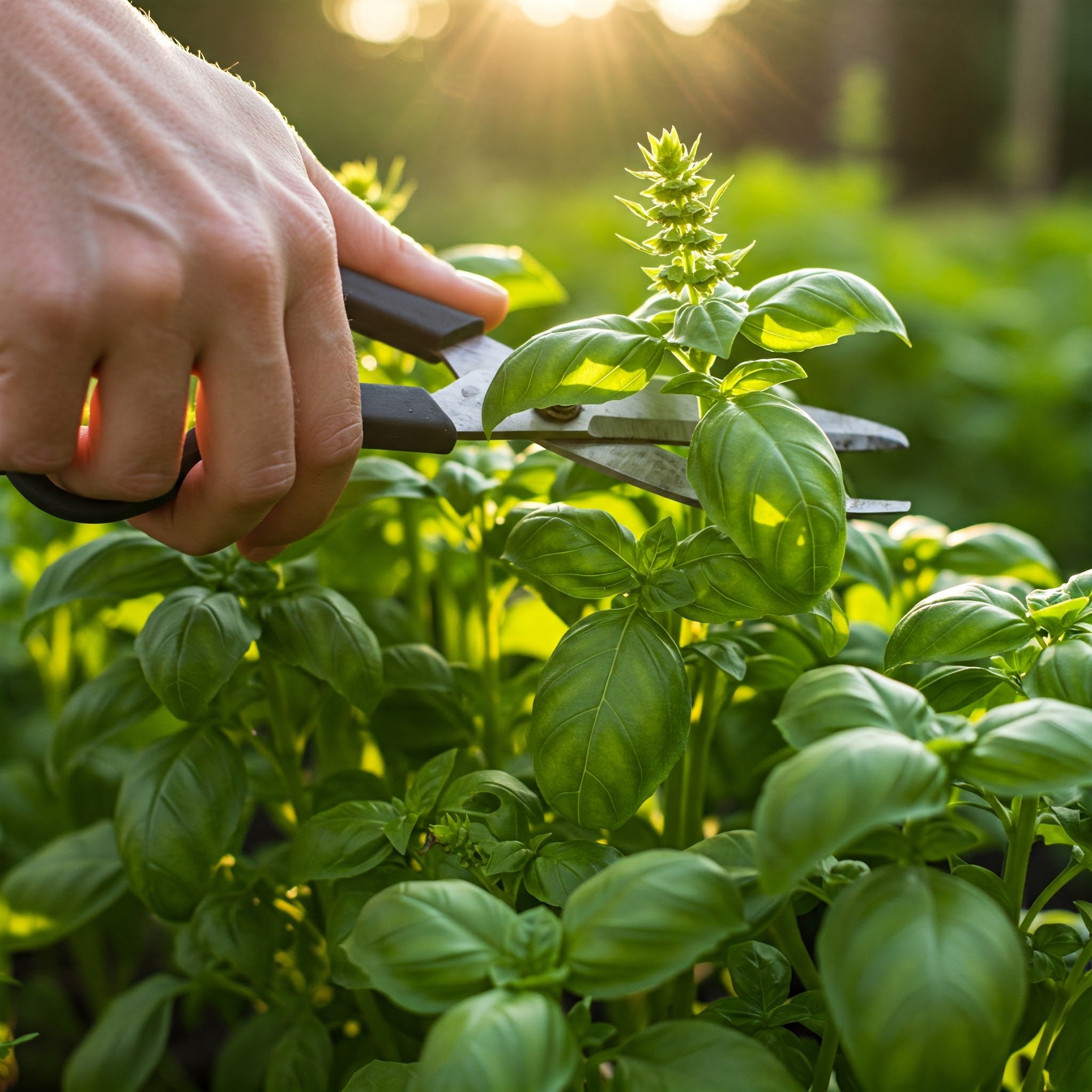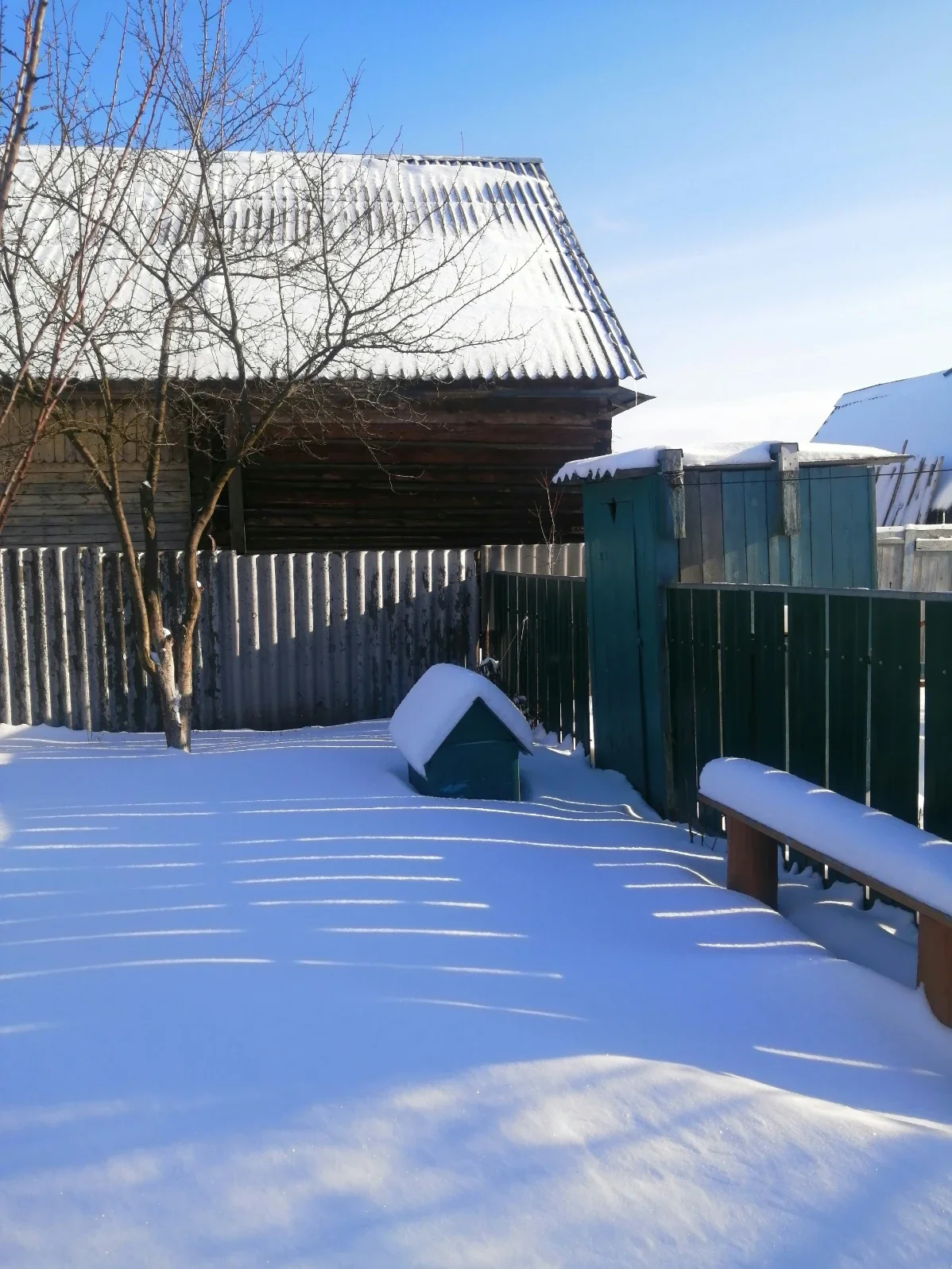How to Prune Basil for Lush Growth and Flavor
Discover the secrets of How to Prune Basil for Lush Growth and Flavor with our creative guide! Learn step-by-step techniques, expert tips, and FAQs to transform your basil garden into a thriving, aromatic haven.
Picture this: it’s a sunny afternoon, and you’re standing in your garden surrounded by the tantalizing aroma of fresh basil. You’ve always loved basil’s sweet, peppery scent and its culinary magic, but lately, your little herb patch just isn’t living up to its full potential. Ever wondered why your basil seems a bit scraggly or isn’t producing the lush, vibrant leaves you crave? Well, here’s the scoop—pruning is your secret weapon!
In this article, we’re diving headfirst into the world of basil care. We’ll explore the art and science behind How to Prune Basil for Lush Growth and Flavor so you can enjoy a thriving herb garden all season long. Whether you’re a gardening newbie or a seasoned green thumb, this guide is jam-packed with practical advice, quirky insights, and plenty of “aha” moments that’ll have you snipping away like a pro in no time.
The Basil Breakdown: Why Pruning is a Game-Changer
Before we get our hands dirty, it helps to understand what makes basil tick. Basil is more than just a pretty face in your herb garden—it's a fast-growing annual that thrives on sunshine, warmth, and a little bit of TLC. But left unchecked, basil can turn into a bushy, unruly mess that saps its own energy.
What’s the Big Deal with Pruning?
Pruning isn’t just about looking neat and tidy (although, let’s be honest, a well-groomed garden is a joy to behold). It’s about encouraging robust growth, boosting flavor, and keeping your basil plant healthy. Here’s why pruning matters:
Promotes Lush Growth:
Trimming away old or dead leaves channels energy into new, vibrant growth.Enhances Flavor:
By cutting back, you encourage the production of essential oils that pack a punch in flavor and aroma.Prevents Overcrowding:
Removing excess growth ensures better air circulation, reducing the risk of disease.Boosts Productivity:
A well-pruned basil plant produces more leaves, which means more delicious, aromatic basil for your culinary creations.
In short, if you’re serious about your basil, mastering How to Prune Basil for Lush Growth and Flavor is the first step toward gardening success.
Getting to Know Your Basil: Growth Habits and Needs
Before you pull out those pruning shears, let’s chat about what makes basil thrive. Knowing your plant’s habits is like having the secret recipe to your favorite dish—essential and oh-so-satisfying.
Understanding Basil’s Growth Cycle
Basil is a rapid grower, especially during the warm months. It loves basking in the sun and can sprout new leaves at lightning speed. However, without a bit of control, its growth can become too leggy or dense, making it harder for sunlight and air to reach every nook and cranny of the plant.
Key Characteristics of Basil Growth:
Fast-Growing:
Basil plants shoot up quickly and often need regular attention.Branching Habit:
The plant naturally produces side shoots (often called “suckers”) that can develop into new branches.Leafy Foliage:
Basil’s tender leaves are its pride, bursting with flavor when cared for properly.Susceptible to Bolting:
When stressed by heat or overgrowth, basil can bolt (flower), which often diminishes the quality of the leaves.
By keeping these traits in mind, you can fine-tune your approach to pruning and ensure your basil remains at its best.
Tools of the Trade: Getting Your Pruning Kit Ready
Alright, time to get organized! Before you start snipping away, you’ll need a few trusty tools to make the process smooth and efficient. Here’s your checklist:
Essential Tools for Basil Pruning
Sharp Pruning Shears:
Invest in a good pair of sharp, clean shears to make precise cuts.
Gardening Gloves:
Protect your hands from scratches and the occasional prick from the plant.
Disinfectant:
Keep a bottle of rubbing alcohol or a garden disinfectant handy to sterilize your tools between cuts, especially if you’re working with multiple plants.
A Clean Workspace:
Lay out a clean cloth or newspaper to catch the trimmed leaves, making cleanup a breeze.
With your toolkit at the ready, you’re all set to embark on your basil pruning adventure!
How to Prune Basil for Lush Growth and Flavor: A Step-by-Step Guide
Now that you’ve got the basics down, let’s dive into the nitty-gritty of pruning. We’re going to break it down into manageable steps that even the busiest of gardeners can follow.
Step 1: Timing is Everything
When to Prune:
Early morning or late afternoon is ideal—when the sun isn’t too harsh and the plant is most relaxed.Frequency:
Aim to prune your basil every 1-2 weeks during the growing season. Regular pruning keeps your plant focused on producing new, flavorful leaves.
Step 2: Identify What Needs Cutting
Take a good look at your basil plant. What stands out? Here are the main targets:
Flower Buds:
If you notice tiny buds forming, pinch them off immediately. Flowering diverts energy from leaf production, which can lead to a bitter taste.Leggy Stems:
Stems that stretch out too long without producing leaves can be trimmed back to encourage bushier growth.Old or Damaged Leaves:
Remove any yellowing or brown leaves to keep your plant healthy and disease-free.
Step 3: The Pruning Process
Time to get your snipping shears in action! Here’s how:
Grab a Pair of Shears:
Make sure they’re clean and sharp.Start at the Top:
Begin by cutting the top portion of the stem, about 1/3 of the way down. This encourages side shoots to branch out.Snip at a 45-Degree Angle:
This method promotes faster healing and a neat appearance.Keep It Balanced:
Don’t overdo it on one side—try to maintain an even, symmetrical shape for your plant.Remove Flower Buds Immediately:
A quick pinch-off is all it takes to ensure the plant remains focused on leafy growth.
Step 4: Clean-Up and Care Post-Pruning
Clear Away Clippings:
Remove all the trimmed leaves and stems from around the plant to reduce the risk of disease.Water Gently:
After pruning, give your basil a light watering to help it recover and encourage new growth.
Monitor:
Keep an eye on the plant for a few days post-pruning to ensure it’s responding well to the cuts.
By following these steps, you’re well on your way to mastering How to Prune Basil for Lush Growth and Flavor and giving your herb garden the boost it deserves.
Pro Tips and Insider Secrets for Basil Pruning
Sometimes, the best tips come from seasoned gardeners who’ve learned a trick or two along the way. Here are some nuggets of wisdom to help you get the most out of your basil pruning efforts:
Pro Tip #1: Don’t Be Afraid to Snip
Go for It:
The more you prune, the bushier and more flavorful your basil will be. Don’t hesitate to make that first cut!Regular Maintenance:
Make pruning a routine part of your gardening schedule to keep your plant in peak condition.
Pro Tip #2: Use the Right Technique
Pinch, Don’t Cut (Sometimes):
For very small stems or delicate adjustments, you can simply pinch off the leaves with your fingers.Cut Above a Leaf Node:
Always make your cut just above a leaf node. This is where new growth will sprout, ensuring a fuller plant.
Pro Tip #3: Pair Pruning with Proper Feeding
Fertilize Wisely:
A balanced, water-soluble fertilizer can work wonders when used sparingly. Too much fertilizer, though, can burn your basil—so keep it light!Mulch for Moisture:
Adding a thin layer of organic mulch can help retain moisture and keep the roots cool
Pro Tip #4: Mind the Weather
Avoid the Heat:
Prune on cooler days when the sun isn’t beating down too hard. Your basil will thank you for it.Watch for Frost:
Basil is a warm-weather herb, so if there’s any risk of frost, postpone your pruning until conditions improve.
Common Pitfalls: What Not to Do When Pruning Basil
Even the most dedicated gardeners can stumble upon a few common mistakes. Here’s what to steer clear of when learning How to Prune Basil for Lush Growth and Flavor:
Mistake 1: Over-Pruning
The Risk:
Cutting too much at once can leave your plant stressed and underdeveloped.The Fix:
Aim for gradual, regular trims rather than a drastic overhaul.
Mistake 2: Ignoring Flower Buds
The Risk:
Letting flower buds develop can lead to bolting, which compromises flavor.The Fix:
Keep a vigilant eye on your basil, and nip those buds in the bud (pun intended!) as soon as they appear.
Mistake 3: Using Dull or Dirty Tools
The Risk:
Dull shears can crush rather than cut, damaging the plant. Dirty tools can spread diseases.The Fix:
Always clean and sharpen your tools before each session to ensure clean, precise cuts.
Mistake 4: Pruning During the Wrong Time
The Risk:
Pruning during extreme weather—especially during the heat of summer or a cold snap—can shock your plant.The Fix:
Choose a mild, sunny day for pruning to give your basil the best chance of recovery.
Enhancing Your Basil Garden: Beyond Pruning
Pruning is just one piece of the basil puzzle. To really take your herb garden to the next level, consider these complementary practices:
Growing Conditions Matter
Sunlight:
Basil thrives in full sun. Aim for at least 6 hours of direct sunlight per day.Soil:
Use well-draining soil enriched with organic matter. Basil doesn’t like to sit in waterlogged earth.Watering:
Keep the soil evenly moist, but not soggy. A drip irrigation system or a careful hand-watering routine works best.
Companion Planting
Pair with Pests’ Bane:
Basil pairs beautifully with tomatoes, not only enhancing flavor but also repelling pests like aphids and whiteflies.Herb Mix:
Plant basil alongside other herbs such as oregano, thyme, or rosemary to create a dynamic, fragrant garden bed.
Seasonal Care
Spring Prep:
Start your basil indoors if you live in cooler climates, then transplant once the danger of frost has passed.Summer TLC:
During the height of summer, make sure your basil gets plenty of water and shade during the hottest parts of the day.Fall Transitions:
As the weather cools, reduce watering and let your basil slowly wind down, or consider harvesting large quantities for drying or freezing.
Embracing the Journey: The Joy of Pruning Basil
Gardening is more than a hobby—it’s a journey filled with little victories and unexpected lessons. Every time you pick up those pruning shears, you’re not just trimming a plant; you’re nurturing life, fostering creativity, and crafting a space that’s uniquely yours.
Imagine yourself on a lazy afternoon, the sun filtering through the trees, as you gently snip away at your basil. With each cut, you’re not just removing excess growth, you’re setting the stage for a burst of fresh, vibrant leaves that will soon infuse your kitchen with unbeatable flavor. It’s a labor of love that reaps rewards both in taste and in the sheer pleasure of watching your garden flourish.
Remember, the art of How to Prune Basil for Lush Growth and Flavor isn’t about perfection—it’s about passion, patience, and a bit of intuition. Sometimes you might over-prune, and other times you might hold back too much, but every session is a learning experience that brings you closer to that ideal, thriving herb garden.
Conclusion
In the grand tapestry of gardening, pruning stands out as a simple yet transformative act. With a pair of sharp shears, a dash of care, and a pinch of know-how, you can turn an ordinary basil plant into a powerhouse of flavor and vitality. The steps, tips, and insider secrets we’ve shared today are your roadmap to mastering How to Prune Basil for Lush Growth and Flavor—and trust me, once you see the results, you’ll be hooked!
Let’s recap the key takeaways:
Regular Pruning:
Prune every 1-2 weeks during the growing season to encourage bushy, productive growth.Mindful Cuts:
Always cut above a leaf node and remove flower buds to prevent bolting.Clean Tools:
Keep your pruning shears sharp and sanitized to ensure healthy cuts and reduce disease risk.Proper Timing:
Choose early morning or late afternoon for a stress-free pruning session.
By integrating these practices into your gardening routine, you’ll not only enjoy a more attractive basil plant but also reap the culinary rewards of a flavorful, aromatic herb. Gardening is a journey of trial and error, but with each careful snip, you’re paving the way for a garden that’s as delightful to nurture as it is to harvest.
So, whether you’re preparing a zesty pesto or sprinkling fresh basil over a caprese salad, take a moment to appreciate the art behind those lush leaves. Happy pruning, and here’s to many seasons of abundant, mouthwatering basil!
Frequently Asked Questions
Q: How often should I prune my basil plants?
A: It’s best to prune your basil every 1-2 weeks during the growing season. Regular trimming helps keep your plant bushy and productive, ensuring consistent, flavorful leaves.
Q: What’s the best time of day to prune basil?
A: Early morning or late afternoon is ideal for pruning. This avoids the harsh midday sun and gives your basil time to recover before nighttime.
Q: Can I use pruning as a way to control bolting in basil?
A: Absolutely! By regularly pruning off flower buds and leggy stems, you can delay bolting and keep your basil focused on leaf production, enhancing both growth and flavor.
Q: Do I need to sterilize my pruning shears every time?
A: Yes, it’s a good habit to clean your shears with rubbing alcohol before and after each session. This prevents the spread of diseases from one plant to another.
Q: Is it okay to pinch basil leaves off by hand instead of using shears?
A: Sure thing! For smaller stems or delicate adjustments, pinching off leaves with your fingers can be effective. Just be gentle and ensure you’re leaving enough foliage for the plant to thrive.
Q: How does regular pruning affect the flavor of basil?
A: Regular pruning not only promotes lush growth but also enhances the concentration of essential oils in the leaves, resulting in a more intense flavor and aroma.

































